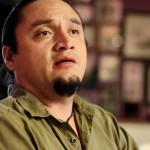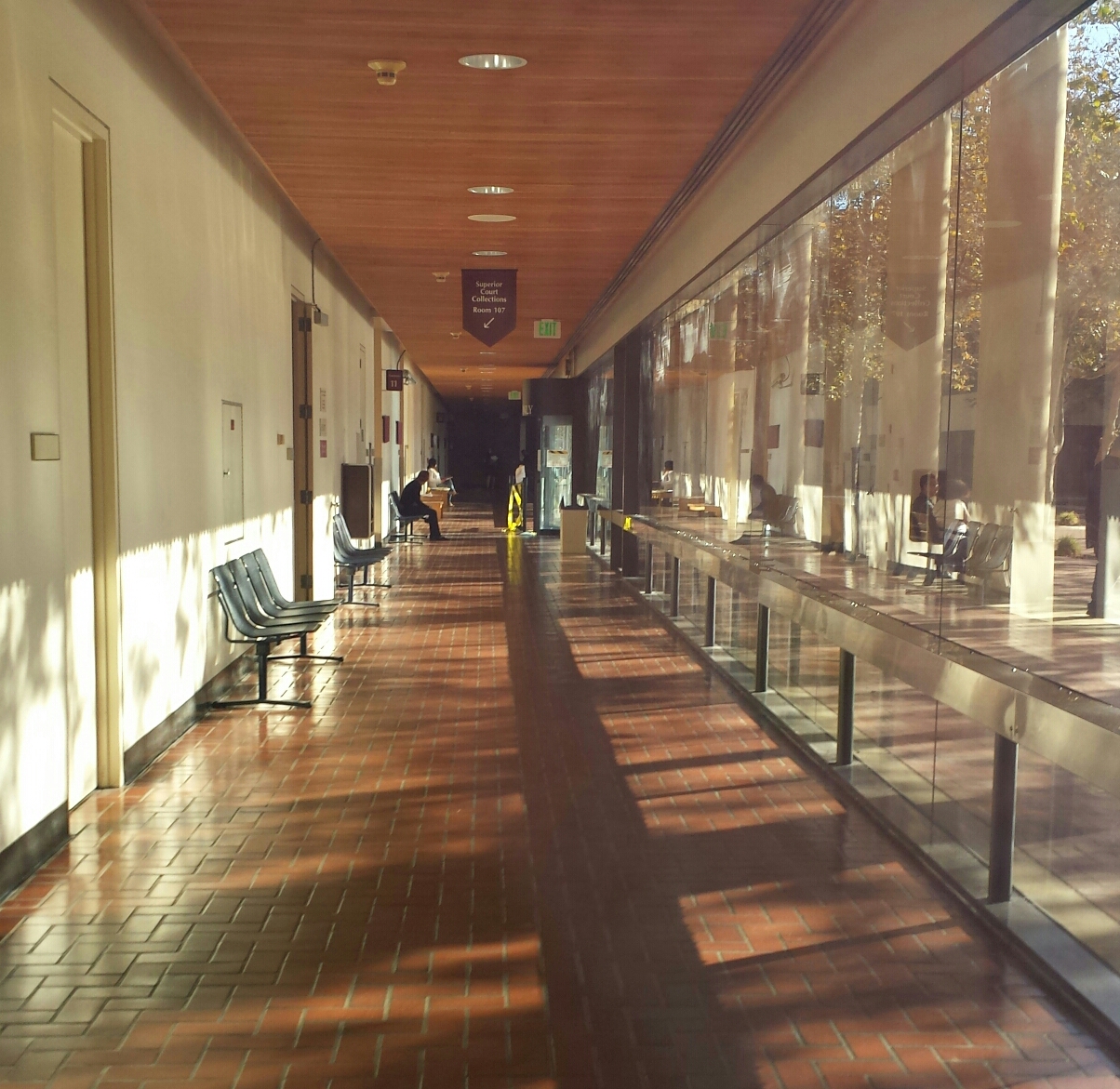
BY RAUL HERNANDEZ
VENTURA COUNTY COURTHOUSE, CALIF. – Community Activist Francisco Romero was the victim of “selective enforcement” when he was video-recorded by Oxnard police officers during a 2013 protest and later, mailed five jaywalking tickets, Romero’s lawyer argued in court Wednesday.
Romero was targeted because he is a “eloquent, charismatic leader” who has been in the forefront of protesting police killings and brutality in Oxnard, said his lawyer Jaime Segall Gutierrez of Whittier, California.
Romero was the only one in the protest march of 150 people who got jaywalking citations, Gutierrez noted.
Gutierrez told the judge that Romero is a community leader who once ran for the City Council and got 7,000 votes and whose voice police want to silence.
“It’s been a big embarrassment to them,” Gutierrez said.
 But Assistant District Attorney Susan Park told the judge that Romero was the jaywalking tickets were given for “public safety purposes” and not to target Romero. She said Oxnard police were enforcing the law and never engaged in selective enforcement by citing Romero.
But Assistant District Attorney Susan Park told the judge that Romero was the jaywalking tickets were given for “public safety purposes” and not to target Romero. She said Oxnard police were enforcing the law and never engaged in selective enforcement by citing Romero.
Gutierrez and Park made final arguments before Commissioner Anthony Sabo, who is presiding over the hearing. Commissioner Sabo will rule on whether the issuance of the five tickets violated Romero’s rights as spelled out in the 1975 Murgia vs. Municipal Court Case.

The defense filed a motion to dismiss the case, citing Muriga vs. Municipal Court. The five jaywalking tickets carry a fine of about $1,000, the defense said.
The California Supreme Court ruled in the Murgia case that a defendant may be entitled to a dismissal of criminal charges if he can prove that there was selective prosecution for improper purposes.
Both lawyers’s closing arguments lasted a total of 30 minutes in an off-and-on hearing that has stretched for more than four months. The hearing included testimony by more than 10 Oxnard officers and at least three defense witnesses including Romero.
Commissioner Sabo told lawyers that he review all the documents and evidence in the case and will rule on the matter in about two weeks.
Outside the courtroom, Gutierrez said he plans to immediately file an appeal if Commissioner Sabo rules against his motion to dismiss. Gutierrez said what is at stake is “protecting future leaders” so they won’t be subjected to this kind of treatment by police.
In addition, Gutierrez said he plans to file a civil lawsuit seeking damages because his client suffered “emotional distress” and will ask for attorney’s fees. Also Gutierrez accused police department trying to shut-down free speech through harassment and intimidation of protestors who hold them accountable when they are involved in deadly shootings or excessive use of force.
The 2013 Oxnard Protest
 There were more than 90 Oxnard police officers, including undercover officers, police strike teams and SWAT units, who were assigned to maintain public safety. Police also brought an armored vehicle to the protest in case it was needed, police documents indicate.
There were more than 90 Oxnard police officers, including undercover officers, police strike teams and SWAT units, who were assigned to maintain public safety. Police also brought an armored vehicle to the protest in case it was needed, police documents indicate.
Uniformed police weren’t visible during the two-mile trek, which began at Camino del Sol Park and ended in front of police headquarters, court evidence indicated.
The Oct. 13, 2013 march was to protest the deaths of young men in Oxnard: Alfonso Limon Jr and Jose Zepeda in Oct. 13, 2012. Before Limon was killed, Robert Ramirez Jr. died June 2012 under police custody, followed by the slaying of Michael Mahoney in August 2012.
Witnesses saw police shooting Limon several times and frantically told police to stop because he was unarmed. A witness recorded the incident through a cell phone camera.
The shooting of Limon resulted in the city of Oxnard having to pay $6.7 million to settle the wrongful death lawsuit filed by Limon’s family which is the largest wrongful death settlement for the city of Oxnard.
Limon was shot between 16 to 21 times by four officers as he lay on the ground, according to the Limon family lawyer Adam Shea. Limon and his brother were walking home when they were fired upon by Oxnard officers looking for a wanted parolee Jose Zepeda who was also killed.
The District Attorney’s Office reviewed the Alfonso Limon shooting and ruled that it was “legally justified and not a criminal act.”
Romero Isn’t a “Protective” Class
Citing several cases including the Muriga case, Park told Judge Sabo that Romero’s claims that he is protected from selective enforcement fails because he never asserted his rights as a member of a race, religion or other protective class as specified in the Muriga motion.
Park said on this legal argument alone, the defense’s motion fails, adding that Romero was cited because of his illegal conduct that was captured on video by police who were monitoring the march and protecting the public.
After the protest, Park said officers looked at the protest video during a police department briefing to determine if anyone had violated the law, and Romero was the only one identified. She said police didn’t want to disrupt the protest so they didn’t give citations at the protest. After the protest, Romero got the five citations through the mail, the evidence indicated.
“It was permissible to discriminate in that situation,” she told Sabo.
Police had testified at the hearing that Romero was never a target, and the video recording proves that he was involved in leading the crowd to commit jaywalking that stopped traffic, including temporary blocking Oxnard boulevard while protestors crossed the busy street.
Defense: Romero Singled out
Gutierrez said this misdemeanor case has dragged through the courts because police had initially refused to release all the video, maintaining that he believes there is more video of the protest that Oxnard police haven’t turned over to the defense.
Gutierrez argued that the Muriga vs.Municipal Court case wasn’t about race or religion but it involved a member of the United Farmworkers Union. In that case, he said police “pulled up and just grabbed” the union member. He said Muriga has nothing to do with race or religion.
“The officers where looking for him,” Gutierrez told Sabo. Adding that Romero was singled out because he is a leader and member of Todo Poder al Pueblo.
Gutierrez said the video recording indicates that two other protestors – Elliot Gabriel and the Guillermo Ramirez – were identified when police were video-recording and said their names. Also he said it is hard to believe that police weren’t able to identify anyone other than Romero among 150 protestors. He noted that the families of victims who were killed by officers or died while under police custody were at the protest march. Also he said most of the protestors live in Oxnard, Gutierrez said.
In addition, Gutierrez said police are heard on the video saying “There he is. There is Romero,” proof that he was being targeted.
Gutierrez said if there was a “high-level dangerous” situation during the protest the police never asked the crowd to disperse nor were there any protestors stopped by police

